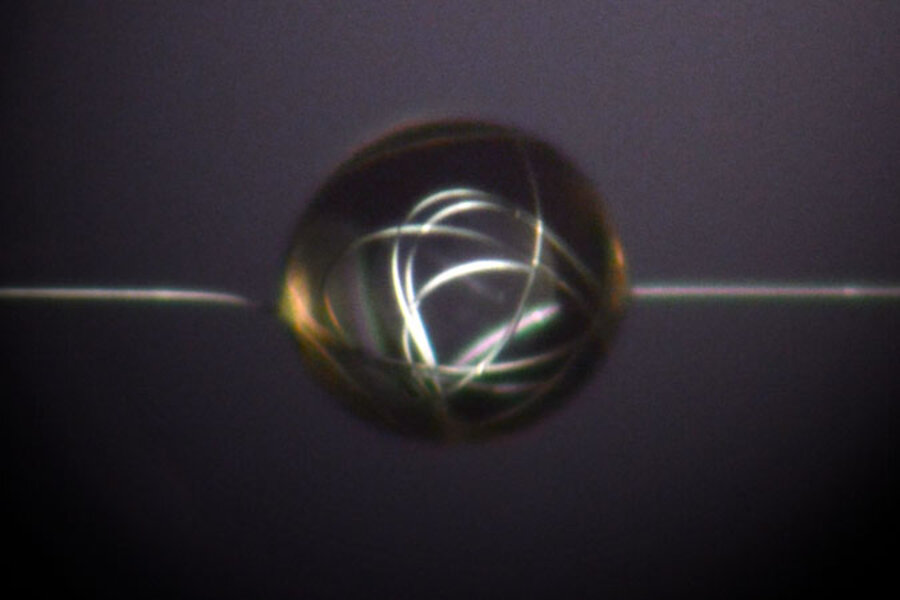'Some pig.' Researchers unravel ‘Charlotte’s Web’-inspired ‘liquid wire’
Loading...
Researchers exploring bio-fiber engineering have unraveled the mechanism behind "Charlotte's Web" and discovered that the silk made by Charlotte in E.B. White's classic book would have been remarkable even without the words, "Some pig."
Searching for the mechanism that enables a spider’s web to spring back into shape without tangling and to catch heavy insects without being destroyed by their weight, researchers discovered thousands of glue-like droplets. The sticky lining both helped the spider capture incoming meals and spontaneously repaired possible tears in the web. In a paper published Monday in the Proceedings of the National Academy of Sciences, researchers in Paris and Oxford, England, called the phenomenon "liquid wire."
“The thousands of tiny droplets of glue that cover the capture spiral of the spider's orb web do much more than make the silk sticky and catch the fly,” Professor Fritz Vollrath of the Oxford Silk Group in the Department of Zoology at Oxford University said in a press release. “Surprisingly, each drop packs enough punch in its watery skins to reel in loose bits of thread. And this winching behaviour is used to excellent effect to keep the threads tight at all times, as we can all observe and test in the webs in our gardens.”
Just as Charlotte spun her specially designed webs to save her friend Wilbur, researchers studied web architecture in the hope of aiding human engineering. The Oxford Silk Group, part of the Department of Zoology at Oxford, studies both the engineering and the ecological sustainability of spider webs in the hope of creating tough, energy-efficient “fibers for the future.”
“While the web is simply a high-tech trap from the spider's point of view, its properties have a huge amount to offer the worlds of materials, engineering and medicine," Dr. Hervé Elettro, the study's lead author and a doctoral researcher at Institut Jean Le Rond D'Alembert at the Université Pierre et Marie Curie, said in the release.
Modeling their work after a spider’s intricate creation, researchers designed a substance that can “extend like a solid and compress like a liquid,” just as a spider’s web does.
“[The web] totally switches behavior in compression to now become liquid-like: It shrinks with no apparent limit while exerting a constant tension,” researchers wrote in the paper.
To recreate the web, the researchers found a balance between the silk’s elastic fibers and the surface tension on the thousands of microscopic glue droplets that line them. They used their study of spider silk to spin their own, human-made silk. The resulting fiber, a “fully self-assembling hybrid material with unprecedented mechanical function,” can repair itself when buckled under great weight and has few limits for its starting material.
“Unraveling the mechanics of spider capture silk allowed us to design a new type of fully self-assembling hybrid material with unprecedented mechanical function, switching from solid-like in extension to liquid-like in compression,” researchers wrote in the paper.








